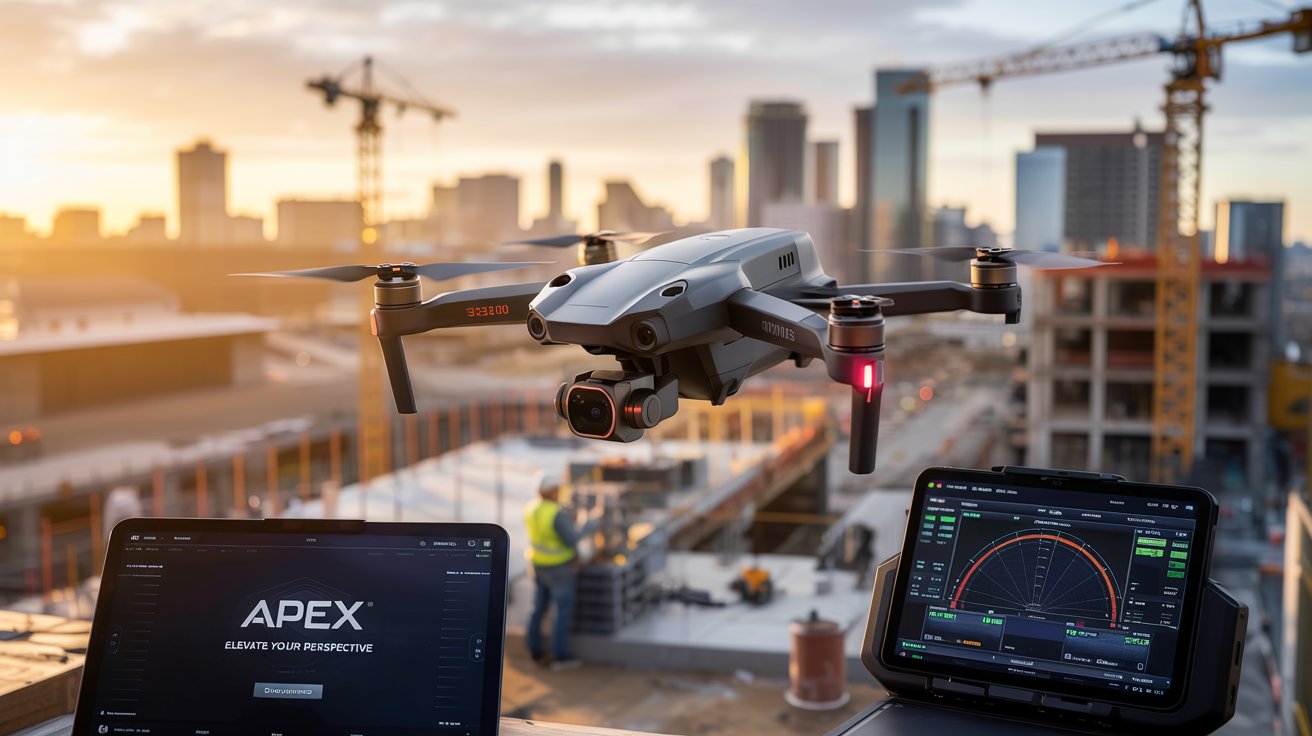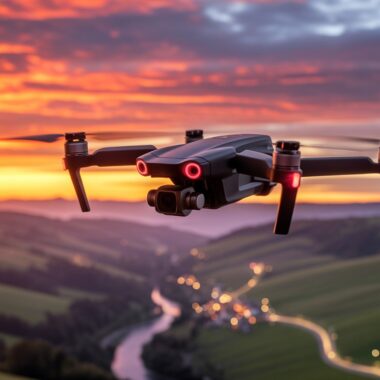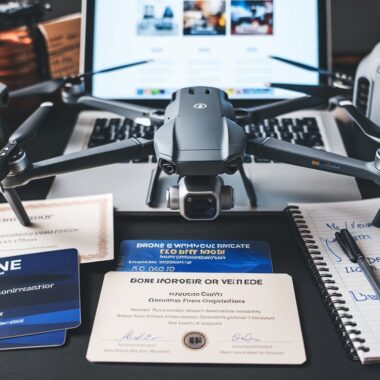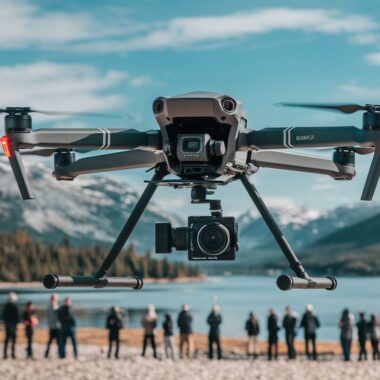The rapid rise of drone technology has transformed industries ranging from agriculture to filmmaking, creating a burgeoning need for skilled professionals who can operate unmanned aerial systems (UAS) safely and effectively. As of April 10, 2025, the global drone market is projected to grow at a compound annual growth rate (CAGR) of over 10% through 2030, driven by commercial applications and technological advancements. Yet, with this growth comes complexity; navigating the regulatory landscape, mastering technical skills, and earning credible certifications are critical for anyone aiming to thrive in this field. This article offers a comprehensive exploration of professional drone organizations and certifications, blending original analysis with insights into their evolving roles, lesser-known contributions, and future implications. Whether you’re a hobbyist transitioning to a professional role or a business integrating drones into operations, this guide provides a roadmap to the institutions shaping the skies.
The Ecosystem of Professional Drone Organizations
Professional drone organizations serve as the backbone of the UAS industry, offering advocacy, education, networking, and standardization. These groups bridge the gap between regulators, manufacturers, and operators, ensuring that drones are integrated into society responsibly. Below, we explore key players, their unique contributions, and their impact on the professional drone landscape.
Association for Unmanned Vehicle Systems International (AUVSI)
AUVSI stands as a titan in the drone world, representing over 7,000 members across more than 60 countries. Founded in 1972, it initially focused on military applications but has since expanded to champion commercial UAS use. Beyond its well-known annual XPONENTIAL conference, AUVSI’s lesser-discussed Trusted Operator Program (TOP) offers a tiered certification system (Levels 1-3) that assesses pilots and organizations on safety, training, and operational standards. This program fills a gap left by the Federal Aviation Administration (FAA), which regulates but doesn’t certify operational proficiency beyond the Part 107 license. For example, a Level 3 TOP certification requires advanced risk management and emergency procedures, skills critical for complex missions like urban package delivery or infrastructure inspection.
AUVSI also influences policy, lobbying for expanded beyond-visual-line-of-sight (BVLOS) operations, which could unlock a $100 billion market by enabling long-range drone deliveries. Its advocacy has tangible results: the FAA’s 2023 Remote ID rule, requiring drones to broadcast identification, reflects AUVSI’s push for airspace accountability.
Commercial Drone Alliance (CDA)
Founded in 2016 by industry veterans Lisa Ellman and Gretchen West, the CDA is a nimble, independent nonprofit focused on advancing commercial drone adoption in the U.S. Unlike AUVSI’s broad scope, CDA zeroes in on policy challenges, such as counter-drone security and economic benefits. Its members-including giants like Amazon and UPS, collaborate on white papers that propose practical solutions, like integrating UAS into urban airspace without disrupting manned aviation.
One underreported CDA initiative is its work with first responders. In 2024, CDA partnered with the Federal Emergency Management Agency (FEMA) to deploy drones during natural disasters, reducing response times by up to 40% in pilot programs. This highlights a trend: professional organizations are increasingly driving real-world applications, not just theoretical frameworks.
Academy of Model Aeronautics (AMA)
While often seen as a hobbyist group, the AMA’s 195,000+ members include a growing cadre of professionals. Established in 1936, it predates modern drones but has adapted by offering safety guidelines and community-based certifications. The AMA’s strength lies in its grassroots network-over 2,500 affiliated clubs provide hands-on training that complements formal certifications. For instance, its “Know Before You Fly” campaign educates operators on airspace rules, a resource even commercial pilots use to stay compliant.
An original observation: the AMA’s decentralized model could inspire a new wave of micro-certifications, where local expertise supplements national standards, especially in rural areas where formal training centers are scarce.
DRONERESPONDERS
This nonprofit, launched under AIRT, Inc., caters to public safety professionals, such as firefighters, police, and search-and-rescue teams. Led by retired Chief Charles Werner, DRONERESPONDERS has trained over 1,200 agencies since 2018, emphasizing drones as “force multipliers.” Its annual Public Safety UAS Conference showcases innovations like thermal imaging drones that located survivors in the 2023 Maui wildfires, a feat traditional methods couldn’t match.
What sets DRONERESPONDERS apart is its focus on interoperability. It’s developing protocols to standardize drone data sharing across agencies, a move that could revolutionize disaster response by 2030 as climate events intensify.
Certifications: Beyond the FAA Part 107
The FAA’s Part 107 Remote Pilot Certificate is the gold standard for commercial drone operators in the U.S., requiring a 60-question exam on airspace, weather, and regulations. As of 2025, over 300,000 pilots hold this credential, a testament to its accessibility (you only need to be 16 and pass a $175 test). But Part 107 is just the starting point-specialized certifications from professional organizations and private entities add depth and marketability. Here’s a breakdown of key options and their hidden value.
FAA Part 107: The Foundation
Part 107 covers the basics: fly under 400 feet, maintain visual line of sight, and yield to manned aircraft. Yet, its limitations-such as no BVLOS without waivers-push pilots toward advanced training. An original insight: the FAA’s recurrent training (every 24 months, online since 2021) is evolving to include scenario-based questions, reflecting real-world complexities like night operations over people, legalized in 2021.
AUVSI Trusted Operator Program (TOP)
TOP’s three levels build on Part 107. Level 1 ensures basic compliance, while Level 3 demands mastery of safety management systems (SMS), akin to what airlines use. This rigor appeals to employers like utility companies, where a single mistake could cost millions. Data point: TOP-certified pilots earn 15-20% more on average, per a 2024 industry survey, due to their proven expertise.
Unmanned Safety Institute (USI) Certifications
USI, a division of ARGUS International, offers the Remote Pilot in Command (RPIC) and Visual Line of Sight Operator (VSO) credentials. These emphasize hands-on skills-think precision landing or thermal imaging analysis-over rote knowledge. USI’s partnership with universities like Embry-Riddle Aeronautical University signals a shift: academic institutions are embedding drone certifications into STEM curricula, producing a new generation of operators by 2030.
Drone Manufacturers’ Certifications
Companies like DJI and Autel Robotics offer training tied to their hardware. DJI’s Enterprise Academy, for instance, certifies pilots on its Matrice series, used in industrial inspections. These programs are niche but practical-knowing a specific platform’s quirks (e.g., battery life under wind shear) can mean the difference between a successful mission and a crash. A prediction: as drones diversify, manufacturer-specific certifications will proliferate, creating a fragmented but specialized credential landscape.
Analysis: Trends and Future Directions
The interplay between organizations and certifications reveals three trends shaping the drone profession:
- Specialization Over Generalization: The days of a one-size-fits-all pilot are waning. Certifications now target niches, agriculture, cinematography, and public safety-reflecting drones’ diverse applications. This mirrors the IT industry’s evolution, where roles like “cybersecurity analyst” emerged from “computer technician.”
- Regulatory Collaboration: Organizations like CDA and AUVSI aren’t just reacting to FAA rules; they’re co-creating them. The push for BVLOS and urban air mobility (UAM) will likely see these groups formalize “drone traffic management” certifications by 2028, preparing pilots for a sky shared with eVTOL taxis.
- Global Divergence: While the U.S. leans on the FAA, Europe’s EASA framework (e.g., Open, Specific, Certified categories) is more granular. U.S. organizations may adopt similar tiers, especially as cross-border operations grow with firms like Matternet testing transatlantic delivery drones.
A bold forecast: by 2035, professional drone pilots could need dual certifications, one for technical proficiency, another for ethical operation, as privacy and environmental concerns (e.g., noise pollution) escalate.
Practical Takeaways for Aspiring Professionals
- Start with Part 107: It’s your entry ticket. Study via online platforms like Pilot Institute, which boasts a 99% pass rate, and expect 15-20 hours of prep.
- Join an Organization: AUVSI or CDA offers networking and policy updates; AMA or DRONERESPONDERS provides community and practical skills. Membership often includes discounted training.
- Pursue Niche Credentials: Match your career goal, TOP for corporate gigs, USI for public safety, or manufacturer courses for tech-specific roles.
- Stay Ahead: Monitor FAA rule changes (e.g., Remote ID compliance) and experiment with emerging tools like AI-driven flight planning, which certifications will soon cover.
Conclusion: The Sky’s Not the Limit-It’s the Starting Line
Professional drone organizations and certifications are more than gatekeepers; they’re catalysts for a maturing industry. From AUVSI’s policy muscle to DRONERESPONDERS’ life-saving innovations, these entities empower operators to push boundaries while staying grounded in safety and ethics. As drones evolve from novelty to necessity, the certifications you earn today will define your role in tomorrow’s airspace. Bookmark this guide, share it with peers, and revisit it as you chart your ascent in this dynamic field. The sky’s just the beginning.





